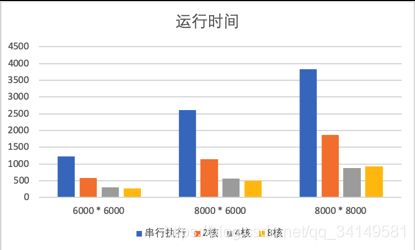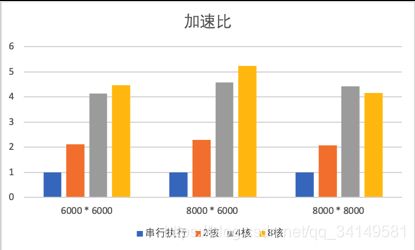- 无矩阵乘法LLM:效率与性能双突破
XianxinMao
人工智能矩阵人工智能线性代数
标题:无矩阵乘法LLM:效率与性能双突破文章信息摘要:无矩阵乘法的LLMs通过创新技术替代传统矩阵乘法操作,显著降低了计算成本,减少了对GPU的依赖。这种模型在内存使用和延迟方面表现优异,尤其在大规模模型上效率显著提升。例如,13B参数的模型仅需4.19GBGPU内存,延迟低至695.48ms,远优于传统模型。此外,基于FPGA的硬件优化进一步提升了性能,1.3B参数模型功耗仅为13W,达到人类阅
- 探索未来计算的新篇章:量子++(Quantum++)
傅尉艺Maggie
探索未来计算的新篇章:量子++(Quantum++)qppModernC++quantumcomputinglibrary项目地址:https://gitcode.com/gh_mirrors/qpp/qpp项目简介Quantum++是一个现代化的C++通用量子计算库,专注于模板头文件的设计。这个库采用C++17标准编写,依赖性极低,仅依赖于高效能的线性代数库Eigen3和可选的OpenMP并行处
- 计算机视觉(Computer Vision, CV)的入门到实践的详细学习路线
云梦优选
计算机数据库大数据计算机视觉学习人工智能
一、基础准备1.数学基础线性代数深入矩阵运算,理解矩阵乘法、转置、逆等基本概念。掌握特征值与特征向量的几何意义,理解其在图像压缩、特征提取中的应用。学习奇异值分解(SVD)及其在降维和数据压缩中的具体应用。概率与统计熟悉贝叶斯定理及其在分类任务中的应用,如朴素贝叶斯分类器。理解常见概率分布(如正态分布、二项分布)及其性质。学习统计推断方法,如假设检验、置信区间估计,以评估模型性能。微积分掌握梯度、
- 数学 :矩阵
极客 - L U
数学矩阵线性代数
文章目录前言1.基本矩阵运算1.1矩阵加法1.2矩阵减法1.3矩阵乘法2.转置矩阵3.旋转矩阵小结【全文大纲】:https://blog.csdn.net/Engineer_LU/article/details/135149485前言在许多应用场合下,我们都需要用矩阵来表示公式,接下来简洁描述矩阵用法1.基本矩阵运算1.1矩阵加法∣a1b1c1d1∣+∣a2b2c2d2∣=∣a1+a2b1+b2c
- 深度学习 Deep Learning 第2章 线性代数
odoo中国
AI编程人工智能深度学习线性代数人工智能
深度学习第2章线性代数线性代数是深度学习的语言。张量操作是神经网络计算的基石,矩阵乘法是前向传播的核心,范数约束模型复杂度,而生成空间理论揭示模型表达能力的本质。本章介绍线性代数的基本内容,为进一步学习深度学习做准备。主要内容2.1标量、向量、矩阵和张量标量:单个数字,用斜体表示,通常赋予小写字母变量名。向量:数字数组,按顺序排列,用粗体小写字母表示,元素通过下标访问。矩阵:二维数字数组,用粗体大
- NPU的工作原理:神经网络计算的流水线
绿算技术
NPU架构介绍神经网络人工智能深度学习
NPU的工作原理可以概括为以下几个步骤:1.模型加载·将训练好的神经网络模型加载到NPU的内存中。2.数据输入·输入数据(如图像、语音)通过接口传输到NPU。3.计算执行·NPU根据模型结构,依次执行卷积、池化、全连接等计算任务。·矩阵乘法单元和卷积加速器并行工作,高效完成计算。4.结果输出·计算完成后,输出结果(如分类标签、检测框)返回给主机或其他处理器。5.任务调度·在多任务场景下,NPU的任
- CESM1.2.1移植使用说明
༊.枕星'听光.ঌ
人工智能linux
文章目录概述环境配置cesm1_2_1配置部分环境软件压缩包改变CLM陆面模式结果文件的输出变量、特征值及频率小结概述记录用户如何在Linux系统上移植CESM1.2.1模型,并且使用CLM4.5模式创建并单点模拟算例I_2000_CLM45。环境配置1.更新系统软件源2.更新系统安装软件安装git、make、python等。3.安装MPI(openmpi4.1.5)//下载并解压进入文件夹wge
- 分子动力学仿真软件:ESPResSo_(14).优化与性能提升
kkchenjj
分子动力学2模拟仿真仿真模拟分子动力学
优化与性能提升在分子动力学仿真中,性能优化是一个至关重要的环节。高效的仿真可以显著减少计算时间,提高研究效率。本节将详细介绍如何在ESPResSo中进行性能优化,包括并行计算、算法优化、内存管理等方面的内容。并行计算并行计算是提高分子动力学仿真性能的有效手段。ESPResSo支持多种并行计算模式,包括多线程(OpenMP)和分布式计算(MPI)。合理利用这些并行计算模式可以显著提升仿真速度。Ope
- 形象理解线性代数的本质(三) 矩阵的升维和降维
_躬行_
线性代数机器学习基础矩阵线性代数
引子:降维打击科幻小说《三体》里一种很魔幻的攻击方法——降维打击,以其神奇的作用方式和巨大的威力刷新了我们的三观。而在矩阵乘法计算中,这种降维打击时刻存在着。本节讲解一下矩阵乘法中造成的升维和降维。一、矩阵的降维还用游戏的例子,有4个角色,每个人都有不同的能力,将其用矩阵表示出来现在我们要评估他们的两种能力:领兵打仗的能力和协同将领的能力只要将两个矩阵相乘,就能根据方法X对象的法则评估出他们这两种
- 【蓝桥杯学习笔记】12.数据结构——单调栈
Master_L u
蓝桥杯python蓝桥杯
系列文章目录【蓝桥杯学习笔记】1.入门基本语法及练习题【蓝桥杯学习笔记】2.常用模型----最大公约数和最小公倍数【蓝桥杯学习笔记】3.质数判断【蓝桥杯学习笔记】5.矩阵乘法【蓝桥杯学习笔记】6.一图看懂差分数组+《小明的彩灯》【蓝桥杯学习笔记】7.哈曼夫树【蓝桥杯学习笔记】8.itertools-为高效循环而创建迭代器的函数【蓝桥杯学习笔记】9.解立方根——二分法+牛顿迭代法【蓝桥杯学习笔记】1
- 探讨矩阵:从基础到应用
LIUJH1233
矩阵算法线性代数c++
一.矩阵的定义由n×m个数aij排成的n行m列的数表称为n行m列的矩阵,简称n×m矩阵。记作:二.矩阵的基本运算2.1矩阵加法矩阵加法一般是指两个矩阵把其相对应元素加在一起的运算。(一般来说,两个矩阵行列相等,包括减法也是)2.2矩阵减法矩阵减法与加法类似,也是对两个同型矩阵对应位置的元素相减。2.3矩阵乘法若有一个x行y列的矩阵与一个y行z列的矩阵,他们就可以相乘,得到一个x行z列的矩阵。但是,
- 人工智能之数学基础:线性代数中的特殊矩阵
每天五分钟玩转人工智能
机器学习深度学习之数学基础线性代数人工智能矩阵机器学习线性空间深度学习
本文重点矩阵是数学中一个重要的工具,在各个领域都有广泛的应用。其中,一些特殊矩阵由于具有独特的性质,在特定的问题中发挥着关键作用。单位矩阵单位矩阵是一种特殊的方阵,在矩阵乘法中起到类似于数字“1”的作用。对于一个的单位矩阵,其主对角线元素全为1,其余元素全为0。性质对于任意一个nxn的矩阵A,有AxI=IxA=A。这表明单位矩阵与任何同阶矩阵相乘都不改变该矩阵。单位矩阵是可逆的,且其逆矩阵就是它本
- 【大模型】fp32 和 fp16 的区别,混合精度的原理。
深度求索者
pythonpytorch
LLMs浮点数一、fp32和fp16的区别,混合精度的原理1.fp32与fp16的对比特性fp32(单精度)fp16(半精度)位数32位(4字节)16位(2字节)内存占用高低(仅为fp32的50%)数值范围约±3.4×10³⁸约±6.5×10⁴精度(尾数)23位(约7位有效十进制数)10位(约3位有效十进制数)用途高精度计算(如梯度更新)高效计算(如矩阵乘法)2.混合精度训练的原理核心思想:结合f
- 科技快讯 | DeepSeek宣布开源DeepGEMM;多个团队开发AI论文反识别技术;OpenAI GPT 4.5现身Android测试版,即将发布
最新科技快讯
科技
DeepSeek宣布开源DeepGEMM财联社2月26日电,Deepseek于开源周第三天宣布开源DeepGEMM。DeepGEMM是一个专为简洁高效的FP8通用矩阵乘法(GEMM)设计的库,具有细粒度缩放功能,如DeepSeek-V3中所提出。它支持普通和混合专家(MoE)分组的GEMM。该库采用CUDA编写,在安装过程中无需编译,通过使用轻量级的即时编译(JIT)模块在运行时编译所有内核。FP
- NCCL学习笔记-拓扑和算法
MatsumotoChrikk
NVIDIANCCL学习笔记算法
集合通信数据并行:all-reduce或reduce-scatter和all-gather张量并行:all-reduce流水并行:点对点p2p序列并行:all-gather和reduce-scatter专家并行:all-to-all集合通信-MPI标准进程间通信也是消息传递最基本的消息传递包括sendreceive等等MPI系统的通信方式都是p2p可以阻塞可以非阻塞而openMPI中就有多个集合通
- 【深度学习】矩阵的核心问题&解析
大数据追光猿
数学基础-矩阵深度学习矩阵人工智能
一、基础问题1.如何实现两个矩阵的乘法?问题描述:给定两个矩阵AAA和BBB,编写代码实现矩阵乘法。解法:使用三重循环实现标准矩阵乘法。或者使用NumPy的dot方法进行高效计算。defmatrix_multiply(A,B):m,n=len(A),len(A[0])n,p=len(B),len(B[0])C=[[0for_inrange(p)]for_inrange(m)]foriinrange
- python中的“@”与“*”运算符
汤姆_布利柏
pythonnumpy
1、@运算符@运算符是对矩阵进行矩阵乘法(即数学上的矩阵相乘)来用的。1.1、二维方阵生成二维矩阵a和b:importnumpyasnpa=np.arange(1,10).reshape(3,3)print(a)print(a.shape)print(type(a))print(a.dtype)[[123][456][789]](3,3)int32b=np.array(np.arange(0,9)
- python中@运算符和*运算符在矩阵乘法中的区别与作用
zeeq_
python矩阵python线性代数
我们在看python程序时,经常可以看到@运算符和*运算符,其中@运算符在传统python中通常是作为装饰器使用的。但是在Python3.5之后,它又具备了矩阵乘法运算的功能。下面使用示例来对比这两个运算符对矩阵运算的影响: 导入用到numpy包:importnumpyasnp 创建一个维度为2×3×3的数组a,结果如下图所示:a=np.arange(1,10).reshape(
- Python 中@ 矩阵乘法运算符详细讲解
Charonrise
python矩阵开发语言
在Python中,@是矩阵乘法运算符,它用于矩阵与矩阵之间的乘法运算,也可以用于矩阵与向量之间的乘法。它是在Python3.5中引入的,用来专门处理线性代数中的矩阵乘法运算。1.基本用法@运算符的作用等价于numpy中的np.dot()或np.matmul()函数。例如:importnumpyasnp#定义两个矩阵A=np.array([[1,2],[3,4]])B=np.array([[5,6]
- DeepSeek开源周合集
Vip.Gong
人工智能transformerchatgpt文心一言pythonscikit-learn深度学习
周一:FlashMLA,核心成就:GPU带宽利用接近理论极限,算力利用效率翻倍;周二:DeepEP,一个高效的MOE架构专家并行通信库:支持高效且优化后的全对全通信使用NVlink和RDMA进行节点内和节点间通信用于训练和推理填充的高吞吐量内核用于推理解码的低延迟内核原生支持FP8操作实现灵活的GPU资源控制,实现计算与通信重叠周三:DeepGEMM,一个通用的GEMM广义矩阵乘法库,支持FP8精
- DeepSeep开源周,第三天:DeepGEMM是啥?
程序员差不多先生
pytorch
DeepGEMM是Deepseek开源的一个高性能矩阵乘法优化库,专为深度学习场景设计。矩阵乘法(GEMM)是深度学习模型的核心运算(如全连接层、卷积层等),其性能直接影响训练和推理效率。DeepGEMM通过算法优化、硬件指令集加速和并行计算技术,显著提升计算速度,适用于GPU、CPU等硬件平台。对开发者的用处性能提升优化计算密集型任务(如LLM训练/推理),降低延迟,提升吞吐量。支持混合精度计算
- 第5关:线性代数
-阿呆-
#numpy数组的高级操作线性代数矩阵python
任务描述本关任务:编写一个能求解线性方程的函数。相关知识为了完成本关任务,你需要掌握:如何使用numpy进行矩阵运算点积和matmul的区别。numpy的线性代数线性代数(如矩阵乘法、矩阵分解、行列式以及其他方阵数学等)是任何数组库的重要组成部分,一般我们使用*对两个二维数组相乘得到的是一个元素级的积,而不是一个矩阵点积。因此numpy提供了线性代数函数库linalg,该库包含了线性代数所需的所有
- 蓝桥杯真题训练 五一 4/5
iuk11
蓝桥杯刷题
1217垒骰子矩阵快速幂op[i]表示的是与i的对面的数。如果有面互斥,就在矩阵中标记为零,否则标记为4,代表顶和底确定的时候可以有四种情况。(矩阵乘法)就是快速幂里面的乘法变成了矩阵乘法。#includeusingnamespacestd;constintmod=1e9+7;typedeflonglongll;constintmaxn=6;lln,m;inta,b;intvis[7][7];in
- 6.3:Matlab中二维数组的基本运算(加减乘除)(课程共5300字,4段代码举例,带详细操作步骤)
小兔子平安
Matlab完整学习全解答matlab机器学习开发语言
例子1:逐元素加法运算(Code①)例子2:矩阵乘法运算(Code②)例子3:逐元素除法运算(Code③)例子4:矩阵减法运算(Code④)——例子1:逐元素加法运算(Code①)%代码示例1:逐元素加法运算A=[123;456;789];B=[101112;131415;161718];C=A+B;disp(C);操作步骤:①打开Matlab软件;②创建一个名为A的二维数组,赋值为[123;45
- Winograd 算法原理推导和python程序
weixin_47696437
算法python人工智能
一、算法背景Winograd算法是一种用于高效计算卷积的算法,其核心思想是通过减少乘法运算的次数来提高卷积计算的效率。在传统的卷积计算中,乘法运算的开销较大,而Winograd算法通过巧妙的变换,将卷积运算转化为在变换域中的矩阵乘法,从而减少乘法的数量,虽然会引入一些额外的加法和变换操作,但整体上在计算效率上有显著提升。二、一维卷积的Winograd推导2.Winograd优化通过多项式变换减少乘
- 一文读懂!深度学习 + PyTorch 的超实用学习路线
a小胡哦
深度学习pythonpytorch
深度学习作为人工智能领域的核心技术,正深刻改变着诸多行业。PyTorch则是深度学习实践中备受青睐的框架,它简单易用且功能强大。下面就为大家详细规划深度学习结合PyTorch的学习路线。一、基础知识储备数学基础数学是很重要的!!!线性代数、概率论与数理统计、微积分是深度学习的数学基石。熟悉矩阵运算、概率分布、梯度计算等概念,能帮助理解深度学习模型的原理。例如,在神经网络中,矩阵乘法用于神经元之间的
- 人工智能的本质解构:从二进制桎梏到造物主悖论
Somnolence.·.·.·.
人工智能人工智能ai
一、数学牢笼中的困兽:人工智能的0-1本质人工智能的底层逻辑是数学暴力的具象化演绎。晶体管开关的物理震荡被抽象为布尔代数的0-1序列,冯·诺依曼架构将思维简化为存储器与运算器的机械对话。即使深度神经网络看似模拟人脑突触,其本质仍是矩阵乘法的迭代游戏——波士顿动力机器人的空翻动作不过是微分方程求解的物理引擎呈现,AlphaGo的围棋神话只是蒙特卡洛树搜索的概率统计。这种基于有限离散数学的架构,注定人
- 2.【线性代数】——矩阵消元
sda42342342423
math线性代数矩阵
二矩阵消元1.消元法2.单行或者单列的矩阵乘法2.1单行矩阵乘法2.2单列矩阵乘法3.用矩阵记录消元过程(初等矩阵)【行的线性组合(数乘和加法)】3.1row2-3row1的矩阵描述3.2row3-2row2的矩阵描述3.3矩阵乘法的性质4.用矩阵记录消元过程(置换矩阵)行列交换4.1行交换4.1列交换5.逆矩阵1.消元法求解方程组{x+2y+z=23x+8y+z=124y+z=2\begin{c
- pytorch笔记:mm VS bmm
UQI-LIUWJ
pytorch学习pytorch笔记人工智能
1bmm(batchmatrixmultiplication)批量矩阵乘法,用于同时处理多个矩阵的乘法bmm的输入是两个3D张量(batchofmatrices),形状分别为(batch_size,n,m)和(batch_size,m,p)bmm输出的形状是(batch_size,n,p)2mmmm是标准的矩阵乘法操作,用于两个二维矩阵相乘mm仅适用于2D张量,输入的形状分别是(n,m)和(m,p
- CUDA与CUDPP源码解析及实战应用
昊叔Crescdim
本文还有配套的精品资源,点击获取简介:CUDA是NVIDIA推出的并行计算平台,CUDPP是一个提供GPU优化算法的开源库。本课程将深入解析CUDPP的核心组件,包括基数排序、扫描操作、动态并行性、随机数生成、缓存机制、矩阵乘法和基准测试等。通过学习CUDPP源码,开发者可以掌握GPU并行计算的优化技巧,提升应用程序性能。同时,本课程也会介绍如何在具备CUDASDK和NVIDIA驱动的系统上安装和
- 算法 单链的创建与删除
换个号韩国红果果
c算法
先创建结构体
struct student {
int data;
//int tag;//标记这是第几个
struct student *next;
};
// addone 用于将一个数插入已从小到大排好序的链中
struct student *addone(struct student *h,int x){
if(h==NULL) //??????
- 《大型网站系统与Java中间件实践》第2章读后感
白糖_
java中间件
断断续续花了两天时间试读了《大型网站系统与Java中间件实践》的第2章,这章总述了从一个小型单机构建的网站发展到大型网站的演化过程---整个过程会遇到很多困难,但每一个屏障都会有解决方案,最终就是依靠这些个解决方案汇聚到一起组成了一个健壮稳定高效的大型系统。
看完整章内容,
- zeus持久层spring事务单元测试
deng520159
javaDAOspringjdbc
今天把zeus事务单元测试放出来,让大家指出他的毛病,
1.ZeusTransactionTest.java 单元测试
package com.dengliang.zeus.webdemo.test;
import java.util.ArrayList;
import java.util.List;
import org.junit.Test;
import
- Rss 订阅 开发
周凡杨
htmlxml订阅rss规范
RSS是 Really Simple Syndication的缩写(对rss2.0而言,是这三个词的缩写,对rss1.0而言则是RDF Site Summary的缩写,1.0与2.0走的是两个体系)。
RSS
- 分页查询实现
g21121
分页查询
在查询列表时我们常常会用到分页,分页的好处就是减少数据交换,每次查询一定数量减少数据库压力等等。
按实现形式分前台分页和服务器分页:
前台分页就是一次查询出所有记录,在页面中用js进行虚拟分页,这种形式在数据量较小时优势比较明显,一次加载就不必再访问服务器了,但当数据量较大时会对页面造成压力,传输速度也会大幅下降。
服务器分页就是每次请求相同数量记录,按一定规则排序,每次取一定序号直接的数据
- spring jms异步消息处理
510888780
jms
spring JMS对于异步消息处理基本上只需配置下就能进行高效的处理。其核心就是消息侦听器容器,常用的类就是DefaultMessageListenerContainer。该容器可配置侦听器的并发数量,以及配合MessageListenerAdapter使用消息驱动POJO进行消息处理。且消息驱动POJO是放入TaskExecutor中进行处理,进一步提高性能,减少侦听器的阻塞。具体配置如下:
- highCharts柱状图
布衣凌宇
hightCharts柱图
第一步:导入 exporting.js,grid.js,highcharts.js;第二步:写controller
@Controller@RequestMapping(value="${adminPath}/statistick")public class StatistickController { private UserServi
- 我的spring学习笔记2-IoC(反向控制 依赖注入)
aijuans
springmvcSpring 教程spring3 教程Spring 入门
IoC(反向控制 依赖注入)这是Spring提出来了,这也是Spring一大特色。这里我不用多说,我们看Spring教程就可以了解。当然我们不用Spring也可以用IoC,下面我将介绍不用Spring的IoC。
IoC不是框架,她是java的技术,如今大多数轻量级的容器都会用到IoC技术。这里我就用一个例子来说明:
如:程序中有 Mysql.calss 、Oracle.class 、SqlSe
- TLS java简单实现
antlove
javasslkeystoretlssecure
1. SSLServer.java
package ssl;
import java.io.FileInputStream;
import java.io.InputStream;
import java.net.ServerSocket;
import java.net.Socket;
import java.security.KeyStore;
import
- Zip解压压缩文件
百合不是茶
Zip格式解压Zip流的使用文件解压
ZIP文件的解压缩实质上就是从输入流中读取数据。Java.util.zip包提供了类ZipInputStream来读取ZIP文件,下面的代码段创建了一个输入流来读取ZIP格式的文件;
ZipInputStream in = new ZipInputStream(new FileInputStream(zipFileName));
&n
- underscore.js 学习(一)
bijian1013
JavaScriptunderscore
工作中需要用到underscore.js,发现这是一个包括了很多基本功能函数的js库,里面有很多实用的函数。而且它没有扩展 javascript的原生对象。主要涉及对Collection、Object、Array、Function的操作。 学
- java jvm常用命令工具——jstatd命令(Java Statistics Monitoring Daemon)
bijian1013
javajvmjstatd
1.介绍
jstatd是一个基于RMI(Remove Method Invocation)的服务程序,它用于监控基于HotSpot的JVM中资源的创建及销毁,并且提供了一个远程接口允许远程的监控工具连接到本地的JVM执行命令。
jstatd是基于RMI的,所以在运行jstatd的服务
- 【Spring框架三】Spring常用注解之Transactional
bit1129
transactional
Spring可以通过注解@Transactional来为业务逻辑层的方法(调用DAO完成持久化动作)添加事务能力,如下是@Transactional注解的定义:
/*
* Copyright 2002-2010 the original author or authors.
*
* Licensed under the Apache License, Version
- 我(程序员)的前进方向
bitray
程序员
作为一个普通的程序员,我一直游走在java语言中,java也确实让我有了很多的体会.不过随着学习的深入,java语言的新技术产生的越来越多,从最初期的javase,我逐渐开始转变到ssh,ssi,这种主流的码农,.过了几天为了解决新问题,webservice的大旗也被我祭出来了,又过了些日子jms架构的activemq也开始必须学习了.再后来开始了一系列技术学习,osgi,restful.....
- nginx lua开发经验总结
ronin47
使用nginx lua已经两三个月了,项目接开发完毕了,这几天准备上线并且跟高德地图对接。回顾下来lua在项目中占得必中还是比较大的,跟PHP的占比差不多持平了,因此在开发中遇到一些问题备忘一下 1:content_by_lua中代码容量有限制,一般不要写太多代码,正常编写代码一般在100行左右(具体容量没有细心测哈哈,在4kb左右),如果超出了则重启nginx的时候会报 too long pa
- java-66-用递归颠倒一个栈。例如输入栈{1,2,3,4,5},1在栈顶。颠倒之后的栈为{5,4,3,2,1},5处在栈顶
bylijinnan
java
import java.util.Stack;
public class ReverseStackRecursive {
/**
* Q 66.颠倒栈。
* 题目:用递归颠倒一个栈。例如输入栈{1,2,3,4,5},1在栈顶。
* 颠倒之后的栈为{5,4,3,2,1},5处在栈顶。
*1. Pop the top element
*2. Revers
- 正确理解Linux内存占用过高的问题
cfyme
linux
Linux开机后,使用top命令查看,4G物理内存发现已使用的多大3.2G,占用率高达80%以上:
Mem: 3889836k total, 3341868k used, 547968k free, 286044k buffers
Swap: 6127608k total,&nb
- [JWFD开源工作流]当前流程引擎设计的一个急需解决的问题
comsci
工作流
当我们的流程引擎进入IRC阶段的时候,当循环反馈模型出现之后,每次循环都会导致一大堆节点内存数据残留在系统内存中,循环的次数越多,这些残留数据将导致系统内存溢出,并使得引擎崩溃。。。。。。
而解决办法就是利用汇编语言或者其它系统编程语言,在引擎运行时,把这些残留数据清除掉。
- 自定义类的equals函数
dai_lm
equals
仅作笔记使用
public class VectorQueue {
private final Vector<VectorItem> queue;
private class VectorItem {
private final Object item;
private final int quantity;
public VectorI
- Linux下安装R语言
datageek
R语言 linux
命令如下:sudo gedit /etc/apt/sources.list1、deb http://mirrors.ustc.edu.cn/CRAN/bin/linux/ubuntu/ precise/ 2、deb http://dk.archive.ubuntu.com/ubuntu hardy universesudo apt-key adv --keyserver ke
- 如何修改mysql 并发数(连接数)最大值
dcj3sjt126com
mysql
MySQL的连接数最大值跟MySQL没关系,主要看系统和业务逻辑了
方法一:进入MYSQL安装目录 打开MYSQL配置文件 my.ini 或 my.cnf查找 max_connections=100 修改为 max_connections=1000 服务里重起MYSQL即可
方法二:MySQL的最大连接数默认是100客户端登录:mysql -uusername -ppass
- 单一功能原则
dcj3sjt126com
面向对象的程序设计软件设计编程原则
单一功能原则[
编辑]
SOLID 原则
单一功能原则
开闭原则
Liskov代换原则
接口隔离原则
依赖反转原则
查
论
编
在面向对象编程领域中,单一功能原则(Single responsibility principle)规定每个类都应该有
- POJO、VO和JavaBean区别和联系
fanmingxing
VOPOJOjavabean
POJO和JavaBean是我们常见的两个关键字,一般容易混淆,POJO全称是Plain Ordinary Java Object / Plain Old Java Object,中文可以翻译成:普通Java类,具有一部分getter/setter方法的那种类就可以称作POJO,但是JavaBean则比POJO复杂很多,JavaBean是一种组件技术,就好像你做了一个扳子,而这个扳子会在很多地方被
- SpringSecurity3.X--LDAP:AD配置
hanqunfeng
SpringSecurity
前面介绍过基于本地数据库验证的方式,参考http://hanqunfeng.iteye.com/blog/1155226,这里说一下如何修改为使用AD进行身份验证【只对用户名和密码进行验证,权限依旧存储在本地数据库中】。
将配置文件中的如下部分删除:
<!-- 认证管理器,使用自定义的UserDetailsService,并对密码采用md5加密-->
- mac mysql 修改密码
IXHONG
mysql
$ sudo /usr/local/mysql/bin/mysqld_safe –user=root & //启动MySQL(也可以通过偏好设置面板来启动)$ sudo /usr/local/mysql/bin/mysqladmin -uroot password yourpassword //设置MySQL密码(注意,这是第一次MySQL密码为空的时候的设置命令,如果是修改密码,还需在-
- 设计模式--抽象工厂模式
kerryg
设计模式
抽象工厂模式:
工厂模式有一个问题就是,类的创建依赖于工厂类,也就是说,如果想要拓展程序,必须对工厂类进行修改,这违背了闭包原则。我们采用抽象工厂模式,创建多个工厂类,这样一旦需要增加新的功能,直接增加新的工厂类就可以了,不需要修改之前的代码。
总结:这个模式的好处就是,如果想增加一个功能,就需要做一个实现类,
- 评"高中女生军训期跳楼”
nannan408
首先,先抛出我的观点,各位看官少点砖头。那就是,中国的差异化教育必须做起来。
孔圣人有云:有教无类。不同类型的人,都应该有对应的教育方法。目前中国的一体化教育,不知道已经扼杀了多少创造性人才。我们出不了爱迪生,出不了爱因斯坦,很大原因,是我们的培养思路错了,我们是第一要“顺从”。如果不顺从,我们的学校,就会用各种方法,罚站,罚写作业,各种罚。军
- scala如何读取和写入文件内容?
qindongliang1922
javajvmscala
直接看如下代码:
package file
import java.io.RandomAccessFile
import java.nio.charset.Charset
import scala.io.Source
import scala.reflect.io.{File, Path}
/**
* Created by qindongliang on 2015/
- C语言算法之百元买百鸡
qiufeihu
c算法
中国古代数学家张丘建在他的《算经》中提出了一个著名的“百钱买百鸡问题”,鸡翁一,值钱五,鸡母一,值钱三,鸡雏三,值钱一,百钱买百鸡,问翁,母,雏各几何?
代码如下:
#include <stdio.h>
int main()
{
int cock,hen,chick; /*定义变量为基本整型*/
for(coc
- Hadoop集群安全性:Hadoop中Namenode单点故障的解决方案及详细介绍AvatarNode
wyz2009107220
NameNode
正如大家所知,NameNode在Hadoop系统中存在单点故障问题,这个对于标榜高可用性的Hadoop来说一直是个软肋。本文讨论一下为了解决这个问题而存在的几个solution。
1. Secondary NameNode
原理:Secondary NN会定期的从NN中读取editlog,与自己存储的Image进行合并形成新的metadata image
优点:Hadoop较早的版本都自带,


